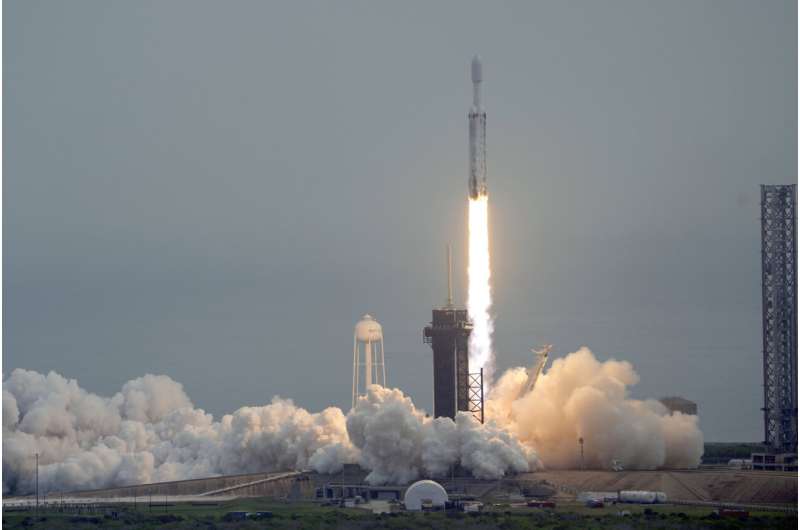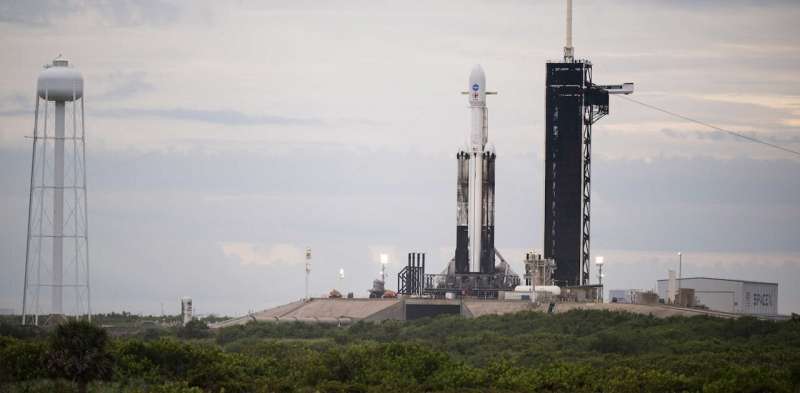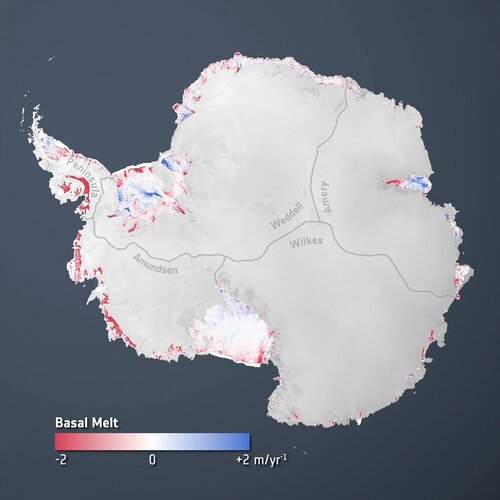
Copernical Team
A comprehensive blueprint for the settlement of Mars

Throughout the 20th century, multiple proposals have been made for the crewed exploration of Mars. These include the famed "Mars Project" by Werner von Braun, the "Mars Direct" mission architecture by Robert Zubrin and David Baker, NASA's Mars Design Reference Mission studies, and SpaceX's Mars & Beyond plan. By 2033, two space agencies (NASA and the CNSA) plan to commence sending crews and payloads to the Red Planet. These and other space agencies envision building bases there that could eventually lead to permanent settlements and the first "Martians."
This presents several major challenges, not the least of which have to do with exposure to radiation, extreme temperatures, dust storms, low atmospheric pressure, and lower gravity. However, with the right strategies and technology, these challenges could be turned into opportunities for growth and innovation. In a recent paper, a Leiden University researcher offers a roadmap for a Martian settlement that leverages recent advancements in technology and offers solutions that emphasize sustainability, efficiency, and the well-being of the settlers.
Psyche spacecraft launched to mysterious and rare metal asteroid in first mission of its kind

NASA's Psyche spacecraft rocketed away Friday on a six-year journey to a rare metal-covered asteroid.
Here's how NASA's Psyche mission could unveil the interior secrets of planets

It's unlikely to be a bad omen, but NASA's mission Psyche is currently due to launch on Friday 13 October. Lifting off at 10:19 EDT on a SpaceX Falcon Heavy rocket, it faces a perilous journey and isn't scheduled for arrival at its namesake asteroid, 16 Pscyhe, until 2029.
Asteroid 16 Psyche (meaning "soul" in Greek) was discovered in 1852 and is named after an ancient Greek princess who married Eros (the namesake of another asteroid). It orbits the sun in the main asteroid belt between Mars and Jupiter, at approximately three times the distance from the sun as Earth. It is a massive M-type asteroid (M stands for "metal-rich"), over 230km across.
Astronomers have to be careful with the term metal though, as in stellar physics "metallicity" means anything heavier than helium. In this case though, we are talking about metals such as iron and cobalt.
To give an idea of scale, if the sun was shrunk down to the size of an official NBA basketball, then the asteroid's diameter would be about the same size as the thickness of three pieces of paper (0.3mm), and located at a distance of 161 meters away.
NASA targets 2024 for first flight of X-59 Experimental Aircraft
 NASA's Quesst mission has adjusted the scheduled first flight of its X-59 quiet supersonic aircraft to 2024.
A one-of-a-kind experimental aircraft, the X-59 has required complex engineering from NASA researchers working with prime contractor Lockheed Martin Skunk Works. In addition to the aircraft's design, the X-59 also combines new technology with systems and components from multiple, es
NASA's Quesst mission has adjusted the scheduled first flight of its X-59 quiet supersonic aircraft to 2024.
A one-of-a-kind experimental aircraft, the X-59 has required complex engineering from NASA researchers working with prime contractor Lockheed Martin Skunk Works. In addition to the aircraft's design, the X-59 also combines new technology with systems and components from multiple, es NASA journeys to the metal-rich asteroid Psyche
 It's a world like no other: a metal-rich asteroid that could be the remnants of a small planet, or perhaps an entirely new type of celestial body unknown to science.
A NASA spacecraft blasted off from the Kennedy Space Center Friday bound for Psyche, an object 2.2 billion miles (3.6 billion kilometers) away that could offer clues about the interior of planets like Earth.
"We're going to
It's a world like no other: a metal-rich asteroid that could be the remnants of a small planet, or perhaps an entirely new type of celestial body unknown to science.
A NASA spacecraft blasted off from the Kennedy Space Center Friday bound for Psyche, an object 2.2 billion miles (3.6 billion kilometers) away that could offer clues about the interior of planets like Earth.
"We're going to Week in images: 09-13 October 2023

Week in images: 09-13 October 2023
Discover our week through the lens
Earth from Space: Bentiu, South Sudan
 Image:
The landscape around the city of Bentiu in South Sudan is featured in this Copernicus Sentinel-2 image.
Image:
The landscape around the city of Bentiu in South Sudan is featured in this Copernicus Sentinel-2 image. Antarctic ice shelf demise

New research, based largely on information from the Copernicus Sentinel-1 and ESA’s CryoSat satellite missions, has revealed alarming findings about the state of Antarctica's ice shelves: 40% of these floating shelves have significantly reduced in volume over the past quarter-century. While this underscores the accelerating impacts of climate change on the world's southernmost continent, the picture of ice deterioration is mixed.
Ex-Fusion and Tokyo Tech establish collaborative research cluster for laser fusion
 EX-Fusion Inc. has established a Collaborative Research Cluster focused on advancing liquid metal devices for the realization of commercial laser fusion reactors in collaboration with Tokyo Institute of Technology. The signing ceremony to formalize this partnership was held on October 11, marking the official commencement of their joint efforts.
The 'EX-Fusion Liquid Metal Collaborative Re
EX-Fusion Inc. has established a Collaborative Research Cluster focused on advancing liquid metal devices for the realization of commercial laser fusion reactors in collaboration with Tokyo Institute of Technology. The signing ceremony to formalize this partnership was held on October 11, marking the official commencement of their joint efforts.
The 'EX-Fusion Liquid Metal Collaborative Re Illuminating errors creates a new paradigm for quantum computing
 Researchers have developed a method that can reveal the location of errors in quantum computers, making them up to ten times easier to correct. This will significantly accelerate progress towards large-scale quantum computers capable of tackling the world's most challenging computational problems, the researchers said.
Led by Princeton University's Jeff Thompson, the team demonstrated a wa
Researchers have developed a method that can reveal the location of errors in quantum computers, making them up to ten times easier to correct. This will significantly accelerate progress towards large-scale quantum computers capable of tackling the world's most challenging computational problems, the researchers said.
Led by Princeton University's Jeff Thompson, the team demonstrated a wa 
































